Forum Replies Created
-
AuthorPosts
-
But that's not how it is done.

I'm sorry Giulio but I have to perfect myself, I will try to improve the test
To do the Ronchi or Foucault tests correctly, the complete illumination of the mirror is however always obtained when the light source on which the slit is installed is installed, and also the eye or the photographic sensor, at an even distance from the mirror (or very close) to the radius of curvature of its surface (which is double the focal length).
Here I would not want to err on the side of pride but I am sure that the lattice has the right distance.(radius of curvature)

I'll do some checks anyway, you never know
Thank you

In fact, this is how the slit is pretty wide it will be a little larger than half a mm.
But only because in this way I am able to embrace the entire surface of the mirror
Anyway I try to reduce it as you say Giulio then let's see the next photos as they come
Thank you

Okay Massimo I'll try to further lower the intensity of the LED

We then see the next photos as they come

Hi guys!
These are the results after a few work sessions (6/7).
The Ronchi scheme has improved quite a bit, the figure gets closer and closer to a probable sphere, even if they are still far from the definitive image.

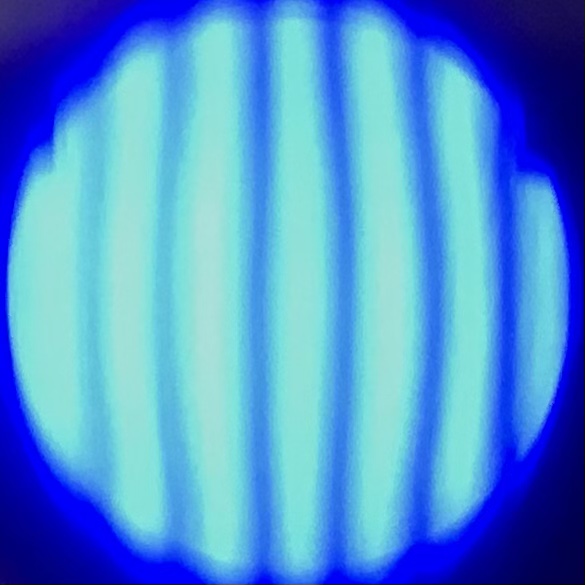
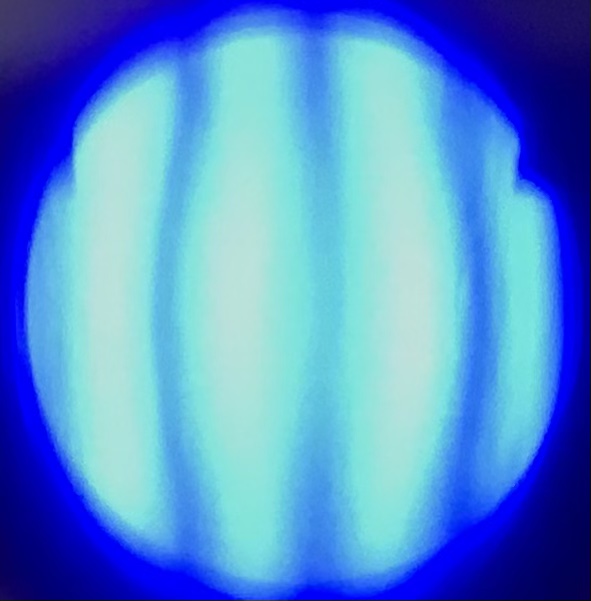
hope to update with the sphere soon


Wait Massimo you misunderstood what I said, one hour refers to the general work session after which I wash everything and put everything away to start work the next day.

The addition of new cerium, on the other hand, takes place within about 10/15 min no more.

Massimo Marconi wrote:
20 minutes for each of the last sessions I was talking about, ( with a few sprinkles of water each 5 me) which then is the limited time beyond which cerium completely loses its abrasive effectiveness, or at least this happens to me ...
As for the timing, we are certainly on two different fronts, my sessions last approximately 50/60 min.( this certainly raises a couple of doubts).
In the position in which I am looking at the last photo posted on the Ronchi, to get to the sphere it will take me many hours of work?(provided that everything works correctly, both tool,oxide, and work sessions).

Hi Massimo,
sorry if I intrude on your 3-D, I just wanted to know how many minutes you spend on each work session (indicatively).
I just need to see if my progress is progressing as it should
Greetings again for your project

Thank you

Ok
 .
.
Sorry I misunderstood
Ok so I start with the COC races.
To test and optimize you intend to make use of the right W strokes?For Ronchi I was already of the idea of lowering the light intensity, the photos were a little overexposed

Let's see what I can do with some work sessions

As always thanks

Hello forum,
I update you on the scheme reached after a few work sessions.
First of all it seems to me that the screen returned by Ronchi has improved a lot, the lines are much smoother than when I started the job, even the roughness on the glass is absent.
Now I have come to get this figure but I cannot advance from this position, I'm probably working the wrong way.
You can see a small hole in the center which in my opinion turns out to be about 2-3 cm or maybe smaller I don't know.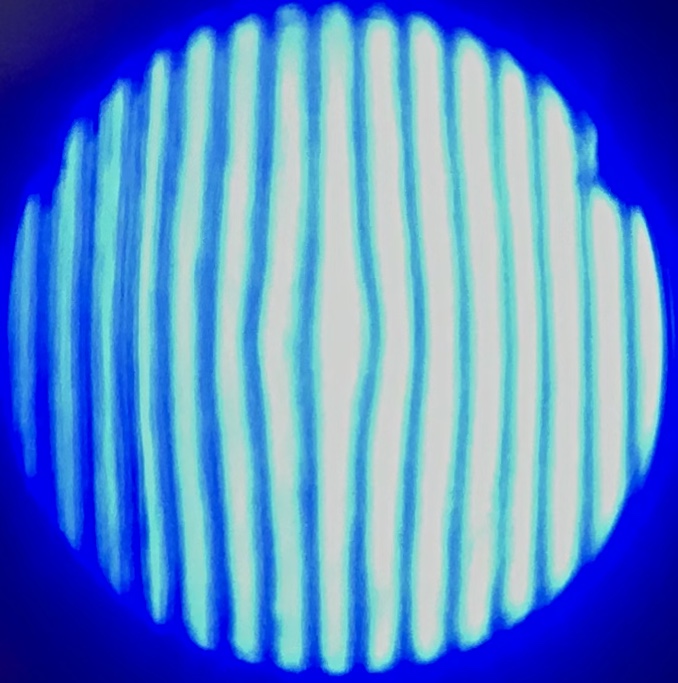


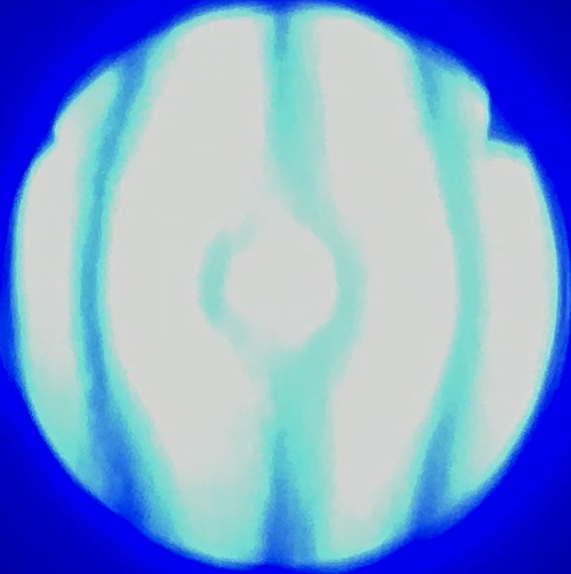
So I did the last few sessions like this :
I tried with decentralized runs of approx 3 cm, then 2 cm then 1 until you get to run center-to-center runs but with every Ronchi performed there has been no improvement.
How do I exactly intercept the median of the camber change?

hello Giulio, as always you are clear and exhaustive in the answers you give , thank you very much.

So I take the decision to discard the used cerium as positive, also because if I have to go back to having signs again due to a polluted compound, it is better not to.
When I started polishing the mirror some marks (really bad signs) I got them from cerium, in fact now that I sift the product before the work sessions I feel much better and I am calmer.
After each sieving I always find some compost granules that are certainly not equivalent to 3.5 microns declared in the package.
Some even have dimensions that are around 1 mm.
However, the important thing is to always find a solution to proceed, the rest comes by itself.

New image improvements regarding the central hole which has shrunk further, on balance it should now be around 8-10 cm.
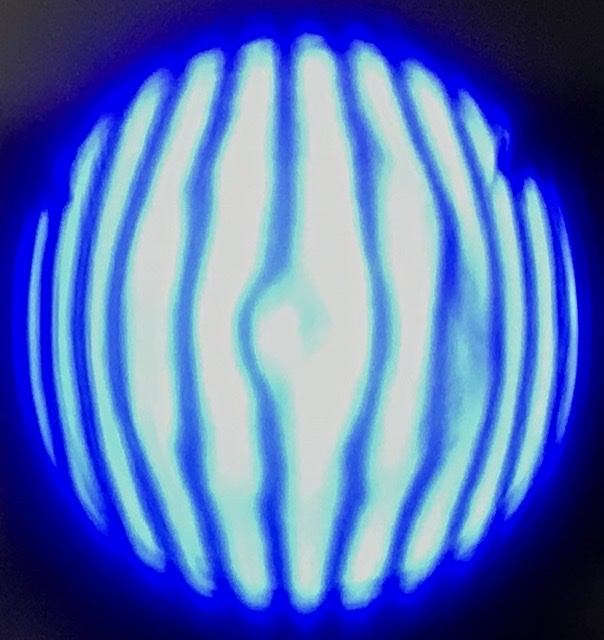
However, I am not satisfied with the external part of the hole (that area that spans about 15-20 cm in diameter mirror), it is as if the defect I had before was regenerating itself or maybe it is my impression.
For sure, the decentralized races are working properly, I'm probably doing the W racing wrong.
When I make left and right moving with a W trajectory I reach over the hips by about 12-13 cm and frontally overflow of about 3-4 cm.
I don't know if that's correct?However, if you look closely, the image looks more like a parabola than a sphere.

See you soon

Well before this tool I had made a smaller one that's why maybe you got confused

However, as soon as I reach the sphere I will prepare the sub-diameters necessary to develop the parabola




Well then in my case, having a full diameter tool, narrow W strokes are fine.

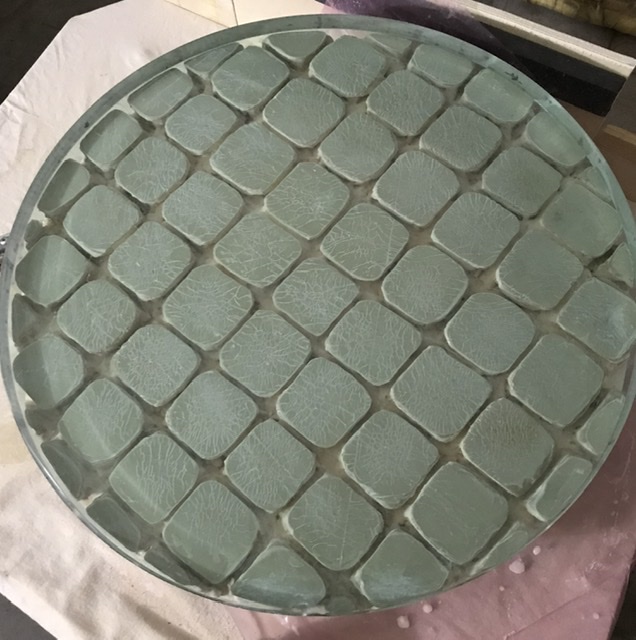
I also had doubts about cerium oxide recycling, both for the impurity and for the effectiveness of the product now used, in fact I just asked why every time I finish a work session I throw away so much.

As soon as I have new images I update.
Thank you.

well Massimo,
I'll try to do as you tell me, I think I have grasped what there is to do.

For W races, you advise me to gradually vary the width as the center approaches,so I should reduce the front overflow right?
I would also like to open a small parenthesis on the cerium oxide used in the work sessions.
Since a good part of the product ends up on the glass edge or even on the support where the glass rests due to the washout, it is counterproductive to recover it and use it again?
thank you, see you soon

Luca
-
AuthorPosts